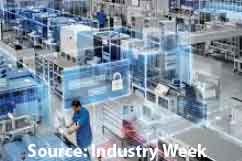The US economy is opening back up virtually everywhere, as worries about the coronavirus – rightly or wrongly – are clearly ebbing as the nation yearns to be allowed back out of their houses.
But it is going to take a long time to get the economy back to some semblance of the great shape it was in before the virus crisis, especially for manufacturers.
Supply Chain Digest Says... |
 |
| Another major challenge for manufacturers is making physical and process changes to reduce infection risks in their factories. |
 |
What do you say? |
| Click here to send us your comments |
| |
| Click here to see reader feedback |
|
|
But it is going to take a long time to get the economy back to some semblance of the great shape it was in before the virus crisis, especially for manufacturers.
The US Purchasing Managers Index for May, released last week by the Institute for Supply Management, came in at a level of 43.1, well below the key 50 mark that separates US manufacturing expansion from contraction.
In modest good new, that score was up 1.6 percentage points from the April reading of 41.5, which was the lowest seen since the bottom of the Great Recession in 2009, when it dropped to just 39.9. Some economists had predicted at the time that the April Index level would be as low as 35.
However, in a negative sign for future manufacturing growth, the ISM New Orders Index registered just 31.8 in May. While that was an increase of 4.7 percentage points compared to the 27.1 reported in April, it also means new orders contracted for the fourth consecutive month. This is also the New Orders index's second-lowest reading since December 2008, only surpassed by the April number.
A variety of challenges are facing manufacturers trying to ramp production back up.
Many of course are still best by a lack of demand from their customers trying to get their own businesses back on track. Durable goods orders in the US, for example, are at the lowest level in a decade.
Others are seeing stronger demand, but can't meet it due to the inability of some suppliers to fill purchase orders for parts in a timely fashion. But demand is down for many, and is likely to stay that way for some time – with perhaps major impacts on manufacturers.
A recent article in the Wall Steet Journal, for example, quotes Pin Ni, president of auto parts maker Wanxiang America, as saying that he expects some suppliers to go out of business soon because they won't be viable at the lower production volumes anticipated across the auto industry.
"Any one [supplier] failure is going to impact everybody," Pin told the Journal. "We're all co-dependent on each other."
(See More Below
|
CATEGORY SPONSOR: SOFTEON |
|
|
|
|
|
Another major challenge for manufacturers is making physical and process changes to reduce infection risks in their factories. Many, for example, are moving work cells further apart, reducing efficiency in the flow of materials to achieve greater health safety for employees.
 Kristin Dziczek, from the Center for Automotive Research, said last week that as factories reopen, companies are going to have to take special precautions to keep employees apart. Kristin Dziczek, from the Center for Automotive Research, said last week that as factories reopen, companies are going to have to take special precautions to keep employees apart.
Dziczek says, for instance, that might mean changing the way two workers install seat belts in an auto assembly line.
"They may redesign that job, so that somebody is installing the right seat belt anchor inside the car while someone else is doing something on the left side of the vehicle, on the outside," she said.
Steve Greenspon, CEO of Housewares company Honey Can-Do International, said the company's Illinois distribution center is less efficient now because operations have been reconfigured to separate employees. For instance, the company is only allowing one worker at a time to unload shipping containers, rather than the two people that usually work together inside the cramped metal boxes.
"The container takes twice as long to unload," he said.
Though for offshore factories, Apple it is working with suppliers to change factory floor plans, implement flexible working hours, and stagger work shifts to allow workers to "maximize interpersonal space" – maybe good moves, but all likely adding to costs.
What other challenges are manufacturers facing in opening back up? Let us know your thoughts at the Feedback section below.
Your Comments/Feedback
|

